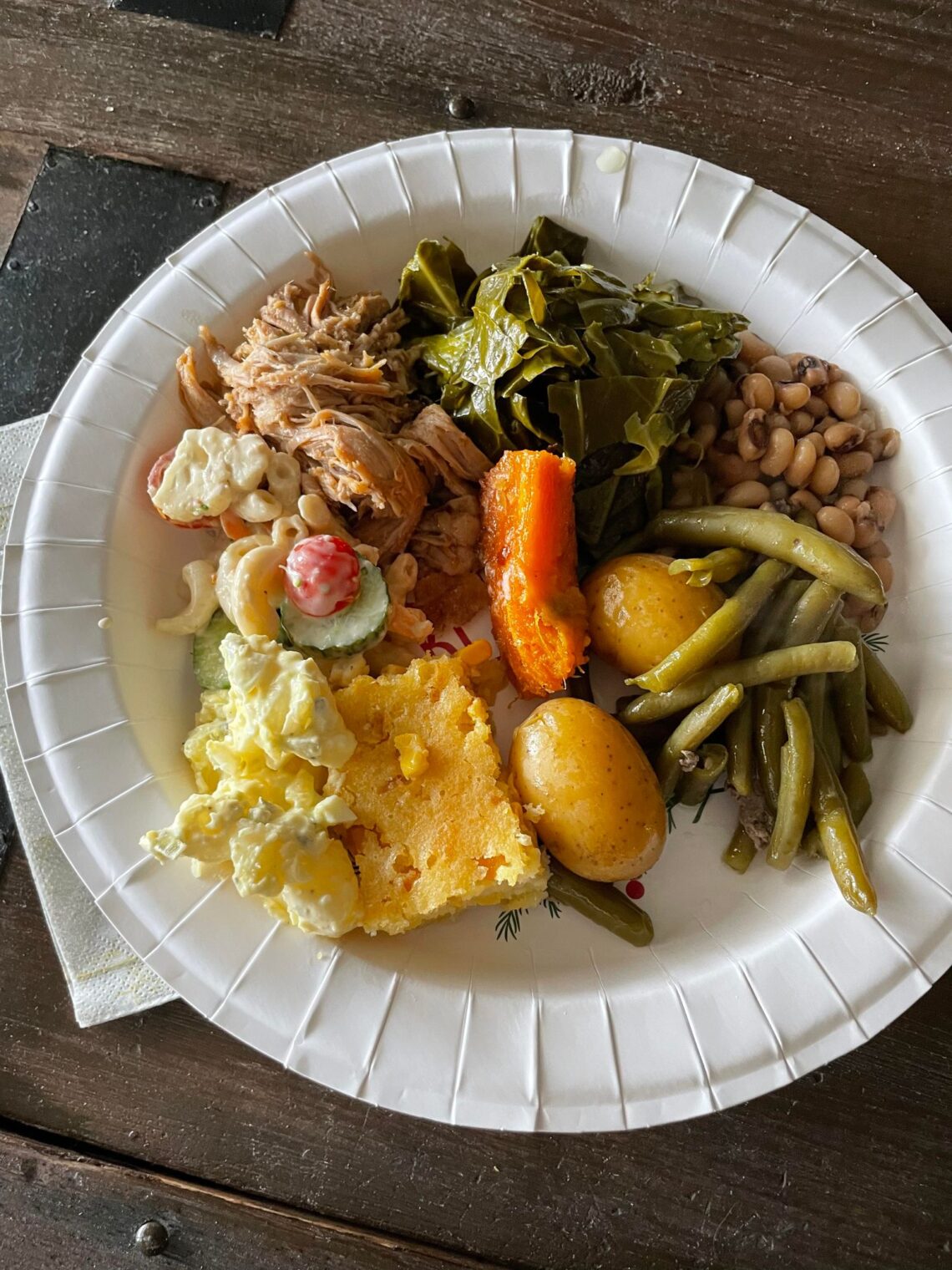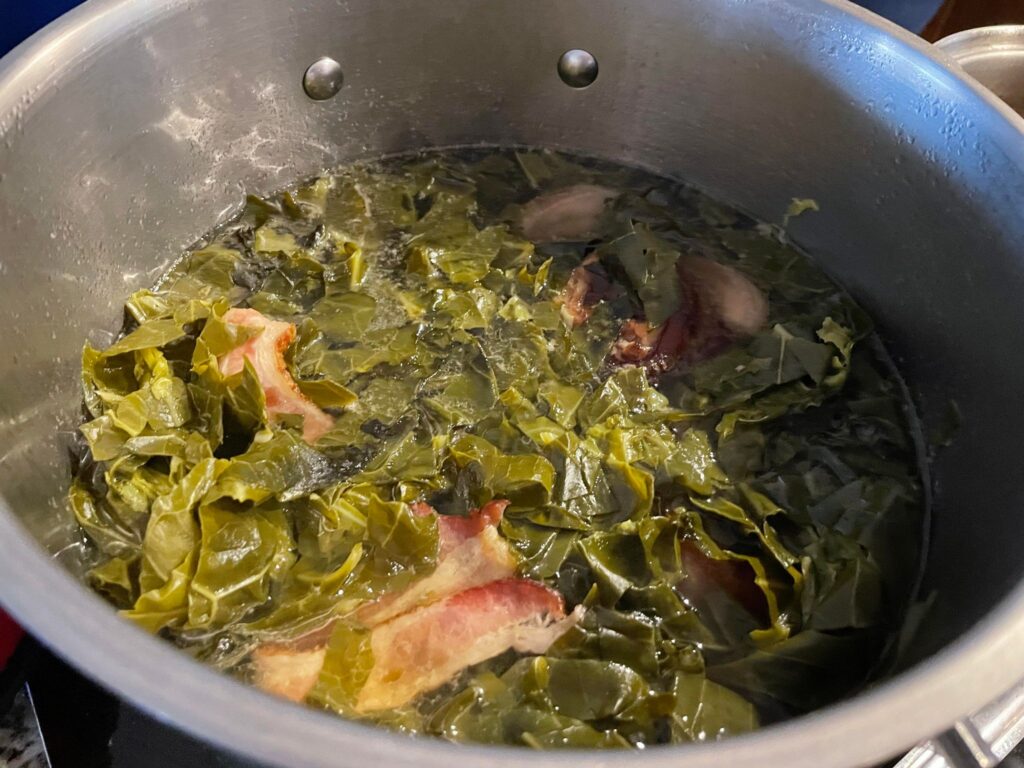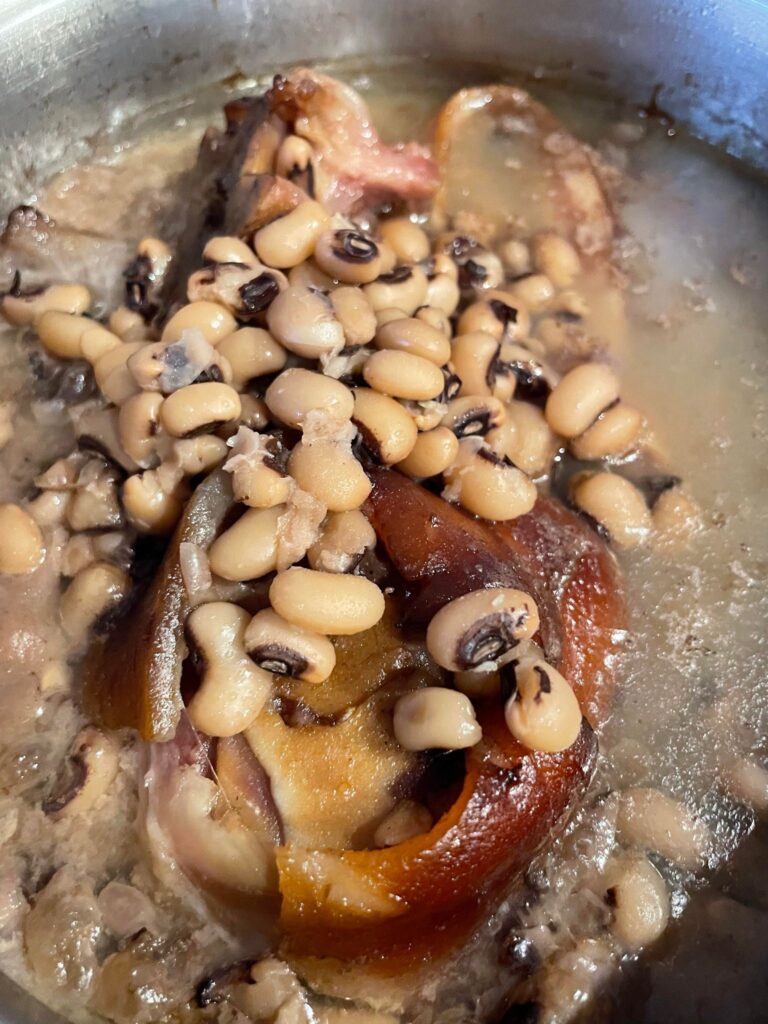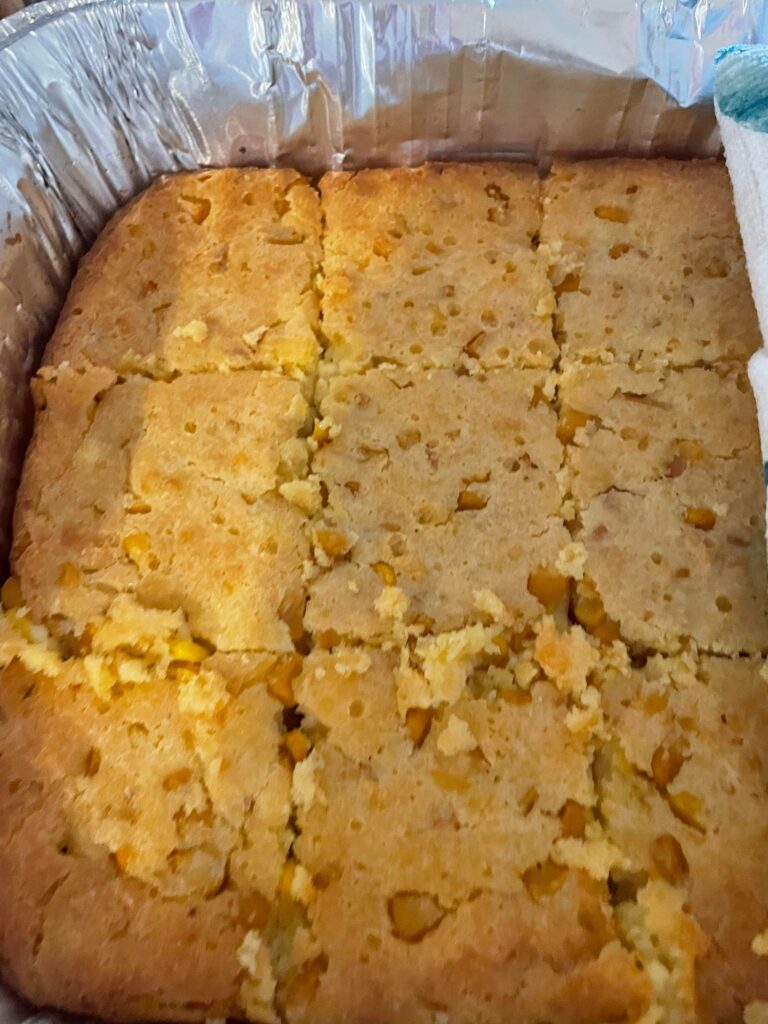
Eating in the New Year
By Robbie Perdue
As the clock strikes midnight and the calendar turns to January 1st, a unique aroma fills Southern kitchens. It’s a scent that heralds prosperity and good fortune, a tradition steeped in history and hope: the cooking of black-eyed peas and collard greens for New Year’s Day.
The roots of this Southern tradition run as deep as the history of the South itself. Black-eyed peas, originally from West Africa, were one of the few food sources left for the Confederate South after Sherman’s march. The humble pea thus became a symbol of survival and resilience. Over time, eating black-eyed peas on New Year’s Day evolved into a practice believed to bring prosperity in the coming year, with each pea representing a coin in the future wealth of those who partook.

Collard greens, with their deep green hue, are said to add to the wealth, symbolizing the color of money. This leafy vegetable, a staple in Southern gardens, is typically simmered slowly with a piece of smoked pork for a savory flavor that complements the earthy taste of the peas. The greens are not only delicious but also packed with nutrients, offering a healthy start to the New Year.
The dish often includes other ingredients, each with its own symbolic meaning. Cornbread, with its golden color, represents gold and thus further wealth to be added to the New Year. Some families add a shiny dime to the pot of peas, and the person who finds it in their serving is said to receive an extra dose of good luck.
But this tradition is more than just a promise of financial prosperity. It’s a moment of unity and reflection. Families gather around the table, sharing stories of the past year and hopes for the future. The act of eating black-eyed peas and collards becomes a shared experience, a communal rite of passage into the New Year.

The tradition also speaks to the agricultural past of the South, where farming was not just a livelihood but a way of life. The black-eyed pea, also known as the cowpea, was a crop that could survive the scorching Southern summers and provide food when other crops failed. Collard greens, hardy and frost-resistant, often lasted through the winter when other greens could not. Thus, these foods are a testament to the endurance and adaptability of the Southern people.
In modern times, the tradition has held strong, with many Southern families continuing to prepare these dishes every New Year’s Day. It’s a practice that has been passed down through generations, a thread in the fabric of Southern culture that refuses to be unraveled by time or change.

The preparation of the meal is a ritual in itself. The night before, peas are soaked in water, swelling in anticipation of the feast to come. On New Year’s morning, the collards are washed and chopped, the pork is diced, and the cornbread batter is mixed. The peas are simmered until tender, the greens stewed until they melt in your mouth, and the cornbread baked until it’s a perfect golden brown.
As the day unfolds, the feast is laid out on the table, often accompanied by other Southern favorites like ham, sweet potatoes, and pie. The meal is a celebration, a feast for the senses, and a nod to the hope that the New Year will be as rich and flavorful as the food on the plate.
The story of black-eyed peas and collard greens is a narrative of survival, of overcoming adversity, and of the belief in the promise of a new beginning. It’s a tradition that embodies the spirit of the South, a region that has seen its share of hardship and heartache but continues to face the future with optimism and strength.

As we look to the future, the tradition of black-eyed peas and collard greens on New Year’s Day stands as a reminder of where we’ve come from and where we hope to go. It’s a simple meal with profound significance, a Southern ritual that nourishes not just the body but the soul.
So, as you sit down to your New Year’s meal, remember the rich history and the deeper meanings behind each bite. Celebrate the resilience that this tradition represents, and may your year ahead be filled with the prosperity and good fortune that these humble foods symbolize. Here’s to a New Year filled with the warmth of family, the joy of tradition, and the promise of a bountiful future, from our Southern table to yours.
Happy New Year!
Robbie Perdue
is a native North Carolinian who enjoys cooking, butchery, and is passionate about all things BBQ. He straddles two worlds as an IT professional and a farmer who loves heritage livestock and heirloom vegetables. His perfect day would be hunting deer, dove, or ducks then babysitting his smoker while watching the sunset over the blackwater of Lake Waccamaw.


You May Also Like

What’s the difference in Whiskey & Bourbon?
October 1, 2019
Hunting A Luangwa Crocodile
July 1, 2022
2 Comments
Mark Lews
We had almost exactly the same thing.
Maggie Boineau
We enjoyed our club’s beautifully prepared plate of the traditional dish today! I must admit it wasn’t home-cooked in my kitchen, but we all loved the feast, and there were no dishes to wash! Thanks for the history and the background of this traditional southern New Year’s dish. It’s a great reminder of the historical roots of hard work and the promise of a healthy and prosperous year ahead. I particularly love the humbleness of each ingredient and the excellent way each brings something unique to the experience.